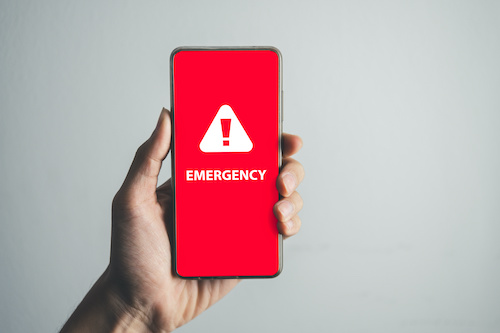Key points:
- Reliable and immediate communication is essential in school emergencies
- See article: Closing the gap in school emergency response
- See article: School safety concerns are on the rise as classrooms open
- For more news on school safety, visit eSN’s Educational Leadership page
For any school, keeping students, faculty, and staff safe is a top priority. Many school leaders will therefore be shocked to learn that 52 percent of U.S. schools include areas that fail to meet current building code requirements for minimum indoor radio signal strength for police and fire department communications.
The implications are clear. In an emergency, when timely and effective communications are vital, first responders may have trouble connecting via their smartphones, hand-held radios, or other devices. This can adversely affect their ability to respond to an emergency and, in worst-case scenarios, put lives at risk.
Ensuring schools have complete communications coverage is, therefore, an urgent imperative. Addressing this challenge involves boosting signal coverage for cellular networks as well as 700 MHz and 800 MHz Land Mobile Radio (LMR) frequencies traditionally used by emergency responders.
School districts will also need to ensure their schools have adequate coverage for FirstNet public safety broadband, which uses the reserved Band 14 communications channel. FirstNet provides a more data-oriented and versatile communication platform compared to traditional radio systems.
Key safety considerations
Expanding cellular, radio, and Band 14 coverage in schools is important for a number of reasons. At the outset of an emergency incident, for instance, poor coverage or signal could make it difficult for a student or staff member to make that first, all-important, 9-1-1 call. In an emergency, even a delay of a few seconds can have major consequences. In practice, schools should therefore look to ensure that coverage extends across basements, closets, and other out-of-the-way places – after all, it’s impossible to know where that first call will need to be made.
Once the emergency services arrive on site, they then need coverage to communicate with each other and coordinate a response. But they may also need to communicate with staff and students, and staff and students may also need to communicate with each other. Signal dead zones must therefore be kept at an absolute minimum, if not eradicated entirely.
Putting in place solutions that improve cellular and public safety coverage is a clear win for school districts, helping them to meet building code obligations and mandates from local authorities. More importantly, by investing in such technology, school districts can elevate their emergency preparedness, ensuring rapid response times, accurate information sharing, and ultimately, the safety and well-being of students and staff during critical incidents.
Updating communication systems
It goes without saying that schools are busy places, and it’s important not to interrupt students’ studies. That’s why timing school communications upgrades to coincide with school vacations, such as summer or winter breaks, makes perfect sense. Even then, however, districts will need options that deliver a rapid implementation turnaround.
When it comes to boosting coverage for LMR and FirstNet Band 14 communications, one great option is an Emergency Responder Communications Enhancement System (ERCES). As the name suggests, this is a technology that boosts the coverage of public safety communications coverage within buildings. Not all solutions are equal, however, and districts should look out for features such as no-noise guarantees for the highest quality connections, and true carrier-grade, multi-band support for FirstNet.
However, an ERCES will only cover emergency service communications. For reliable public cellular coverage, school districts need to look elsewhere. Here, an Active DAS Hybrid solution is the best approach for boosting cell signals indoors. Active DAS Hybrids offer a quick and affordable pathway to ensuring in-building cellular connectivity by taking prolonged planning, engineering, and technical installation out of the equation. These systems are fed “off-air”, which allows them to bring the power of the outdoor network into the building. By improving coverage in the most efficient way possible, Active DAS Hybrids deliver reliable cellular coverage with fewer signal interruptions for students and staff.
Getting the funding in place
For most school districts, money is tight, particularly when it comes to funding infrastructure upgrades. Every dollar not spent on education needs to be justified. But given just how important communications are to public safety in schools, a number of grants have been made to help districts fund these projects.
The Students, Teachers, and Officers Preventing School Violence Act of 2018, for example, gives the Department of Justice (DOJ) authority to provide awards directly to school districts to improve security. Last year, the DOJ announced nearly $190 million in funding to improve the safety of schools across the country. Many states are also making funds available for school safety programs, including Connecticut ($15 million) and Ohio ($68 million), while others are pushing for new legislation that would require schools to deploy safety technologies.
In a world where everyone has a cellphone and emergency response communications are more sophisticated than ever, schools can be safer. The key is to ensure these sophisticated devices can work effectively and at the first time of asking. For that, cellular and radio solutions that quickly and cost-effectively boost coverage will prove invaluable. In any emergency, communications should be the first line of defense. It’s time to make sure that they will work when needed.
- 4 ways to encourage play in education - April 25, 2024
- CoSN IT Leader Spotlight: Lisa Higgins - April 25, 2024
- It’s time to pay student teachers - April 25, 2024

